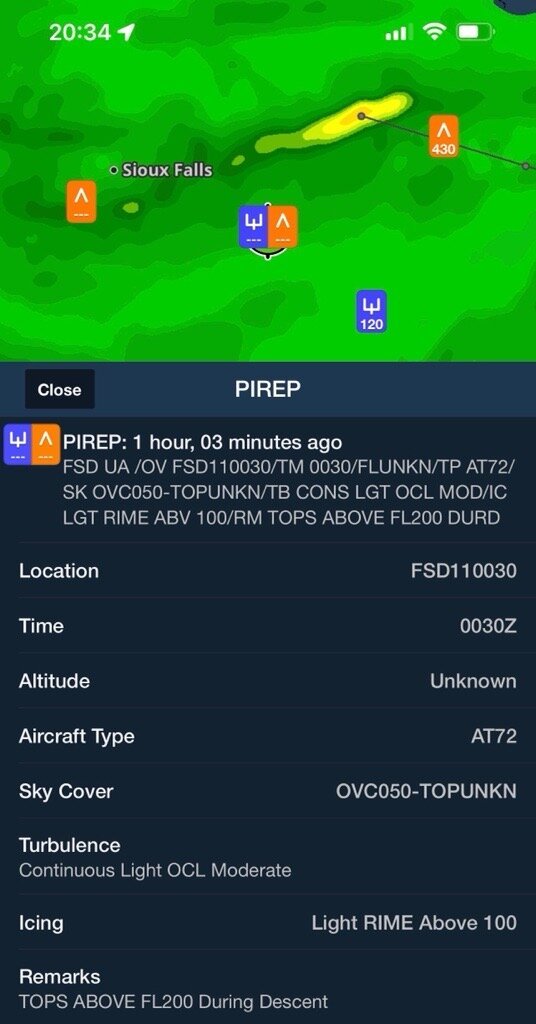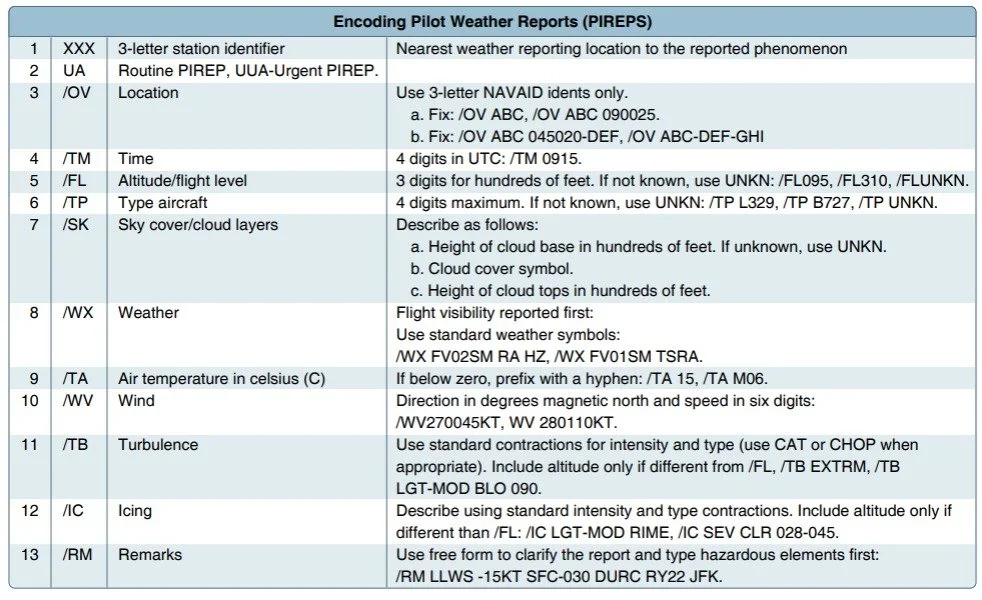
Technology has changed so much the way we fly. Not too long ago I was flying with a paper sectional and an ASA Rotating Plotter. Yet now I can’t remember when the last time I bought a paper chart. Electronic Flight Bags (EFBs) have made it so easy for us to always have the latest charts, weather, weight and balance, and many more tools. Now the important part is that we actually know how to use it, and actually use it.
Now although we have all this technology, nothing beats the words or report of a pilot who is currently out there experiencing a given flight condition. Many times we make the Go/No Go decision based on what they pilot ahead is experiencing and what better way to pay it forward and file Pilot Reports (PIREPs) yourself.
One of the great things of EFBs is that we can now plot the PIREPs on our maps and simply click on the to read this information. In fact on ForeFlight it will even translate the report for you. Although you should have an understanding on how to decode the raw text.
I’m sure the majority of you have never actually filed a PIREP, and if you have, please share your experience in the comments below.
How do we file a PIREP?
There are a few ways a pilot can file a PIREP. You can give the report to Air Traffic Control (ATC), The Flight Service Station (FSS) via their specific frequencies or on 122.0 and if you can’t do it in the air you can also do it once you land via a phone.
What is the Format?
Yes there is a proper way to file a PIREP, but no one will give you a hard time if you don’t use it. At least I have never had that experience. There are just to many things for me to remember. So all I remember is the difference between Urgent and regular.

When are you required to fly one?
There are no requirements for pilots to file PIREPs although I strongly believe there should be some. On the other hand, according to the Aeronautical Information Manual (AIM), ATC is required to request them when the following conditions are reported or forecast: ceilings at or below 5,000 feet; visibility at or below 5 miles (surface or aloft); thunderstorms and related phenomena; icing of light degree or greater; turbulence of moderate degree or greater; wind shear and reported or forecast volcanic ash clouds. AIM 7-1-18.
The Future
It will be extremely difficult to replace a pilot and their judgment. While technology will continue to advance, we will still need PIREP. Do your part next time you go flying, file a PIREP for practice, even on a nice clear day.

Submit a Comment